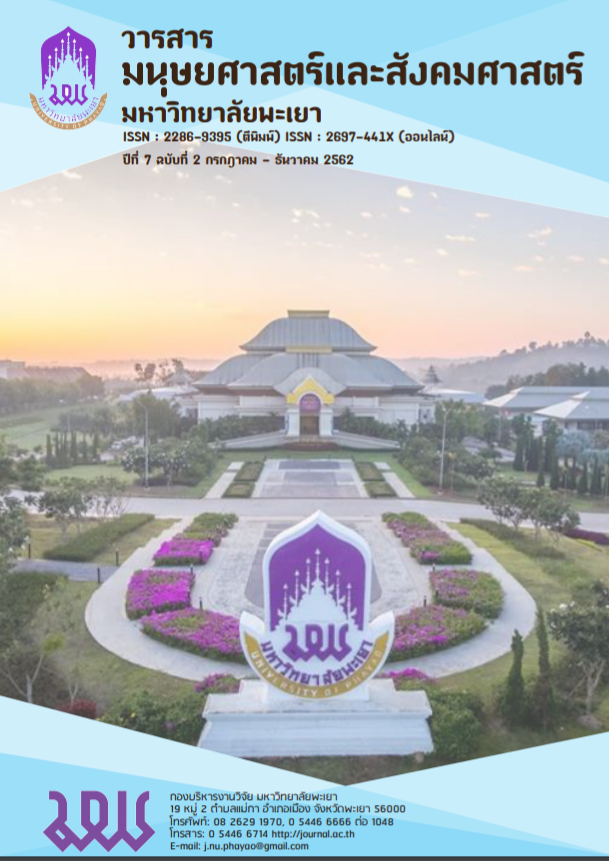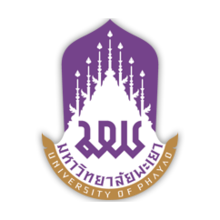Comparison between 5 steps and 11 steps of teaching method on Short-run skills in Mathayomsuksa 2’s students of Lahansai Ratchadapisek School
Keywords:
5 steps teaching, 11 steps teaching, Short-run, StarttingAbstract
The purposes of this study were 1) to study before and after learning achievement in starting block skill for sprints in track events. 2) to compare the results of 5 and 11 steps teaching methods for the starting block skill for sprints in track events for the students of Mattayomsuksa 2 of Lahansai Ratchadapisek School. Subjects were consisted of 74 people, Mattayomsuksa 2/6 and 2/7 students during the second semester of academic year 2018 in Lahansai district, Buriram province at Buriram Primary Educational Service Area Office 3. Subject were by purposive sampling method. The instruments for the study included 3 lesson plans of the 5 and 11 steps regarding the starting block skill for sprints in track events. Subjects were measured by 10 multiple choices learning achievement tests and 5 rating scales of practical skills record form by means of finding percentage, standard deviation, mean, t-test dependent sample and t-test independent sample.
The findings:
- The students had more theory and practice scores after using 5 and 11 methods than betore teach.
- The practical test after teaching, the students were learned 11 steps had more scores than learned 5 steps. (p ≤ .05)
The results of the study were as follows: The experiment group and the control group had post-test scores more than pre-test scores with statistical significance at the level .05. The teaching by using the 11 steps of the teaching process which had the teaching steps and details that is more than teaching using the 5 steps of the teaching process. The results of comparing in learning of the students who participated in using 11 steps of teaching process got an average score of post-test scores rather than teaching by using 5 steps of teaching process with statistical significance at the level .05.
Therefore, teaching with the 11 steps of teaching process is effective for teaching skills in athletics. It is rather than teaching with the 5 steps of teaching process which will be a guideline for further development of the teaching model in Physical Education.
References
กรมพลศึกษา. (2551). T Lincense 2018 (การสอน 11 ขั้นตอน). กรุงเทพฯ : กระทรวงการท่องเที่ยวและกีฬา.
กระทรวงศึกษาธิการ. (ม.ป.ป.). สุขศึกษาและพลศึกษา. กรุงเทพฯ : องค์การรับส่งสินค้าและพัสดุภัณฑ์.
ตัวชี้วัดและสาระสุขศึกษาพลศึกษา. (2551). มาตรฐานการเรียนรู้และตัวชี้วัด กลุ่มสาระการเรียนรู้สุขศึกษาและพลศึกษาพุทธศักราช. กรุงเทพฯ : ชุมนุมสหกรณ์การเกษตรแห่งประเทศไทย.
_____. (2546). การจัดสาระการเรียนรู้ กลุ่มสาระการเรียนรู้สุขศึกษาและพลศึกษา. กรุงเทพฯ : ครุสภาลาดพร้าว.
_____. (2546). ผังมโนทัศน์และการเรียนรู้แกนกลางกลุ่มสาระการเรียนรู้สุขศึกษาและพลศึกษา. กรุงเทพฯ : ครุสภาลาดพร้าว.
กระทรวงศึกษาธิการ. (2551). หลักสูตรแกนกลางการศึกษาขั้นพื้นฐาน พุทธศักราช 2551.กรุงเทพฯ : ชุมนุมสหกรณ์การเกษตรแห่งประเทศไทย.
กาญจนา วัฒนายุ. (2544). การวิจัยในชั้นเรียน. กรุงเทพฯ : กระทรวงศึกษาธิการ.
กิติมา ปรีดีดิลก. (2529). ทฤษฎีการบริหารองค์การ. กรุงเทพฯ : ชนะการพิมพ์.
ขันธชัย มหาโพธิ์. (2535). รายงานการวิจัยเรื่องการเปรียบเทียบผลการเขียนสะกดคำของนักเรียนชั้นประถมศึกษาปีที่ 3 ในสังกัดสำนักงานการประถมศึกษาอำเภอ จังหวัดอุดรธานี โดยใช้แบบฝึกการเขียนสะกดคำกับเขียนตามคำบอก. อุดรธานี: หน่วยศึกษานิเทศก์ สำนักงานการประถมศึกษาอำเภอ จังหวัดอุดรธานี.
จุฬารัตน์ วงศ์ศรีนาค. (2537). การศึกษาผลสัมฤทธิ์ทางการเขียนสะกดคำยากโดยการใช้แบบฝึกทักษะ ของนักเรียนชั้นประถมศึกษาปีที่ 4. วิทยานิพนธ์ ศศ.ม. สาขาวิชาหลักสูตรและการนิเทศ มหาวิทยาลัยศิลปากร.
ชัยสิทธิ์ สุริยจันทร์, เพิ่มศักดิ์ สุริยจันทร์, และวัฒนา สุริยจันทร์. (2525). กรีฑา. มปท. วิทยาลัย.
ชุมพล ปานเกตุ. (2531). การฝึกสอนกรีฑา เบื้องต้น. กรุงเทพฯ : โอเดียนสโตร์.
ธีระพัฒน์ ฤทธิ์ทอง. (2544). 30 รูปแบบการจัดกิจกรรมโดยยึดผู้เรียนเป็นสำคัญ. พิมพ์ครั้งที่ 3. กรุงเทพฯ : เจริญดีการพิมพ์. พลศึกษาจังหวัดเชียงใหม่.
นิยม ทิพจักร. (2540). การสร้างแผนการสอนที่เน้นทักษะกระบวนการวิชาสังคม (ส 503) เรื่องอนุรักษ์ทรัพยากรธรรมชาติ ชั้นมัธยมศึกษาปีที่ 5 ตามหลักสูตรมัธยมศึกษาตอนต้น พุทธศักราช 2551 (ฉบับปรับปรุง พ.ศ.2553). วิทยานิพนธ์ปริญญาการศึกษามหาบัณฑิต มหาวิทยาลัยมหาสารคาม.
พิน คงพูล. (2529). ความพึงพอใจที่มีต่อบทบาทหน้าที่ความรับผิดชอบของคณะกรรมการการประถมศึกษาจังหวัดใน 14 จังหวัดภาคใต้. บัณฑิตวิทยาลัย มหาวิทยาลัยศรีนคริทร
วิโรฒ.
รุจิร์ ภู่. (2545). การเขียนแผนการจัดการเรียนรู้ : Daily Lesson Planning. พิมพ์ครั้งที่ 2. กรุงเทพฯ : บุ๊ค พอยส์.
วัฒนาพร ระงับทุกข์. (2545). แผนการสอนที่เน้นผู้เรียนเป็นศูนย์กลาง. พิมพ์ครั้งที่ 2. กรุงเทพฯ : แอล ที เพรส.
ศลใจ วิบูลกิจ. (2544). ความสัมพันธ์ระหว่างเทคนิคการประสานงานของศึกษาธิการอำเภอกับความพึงพอใจของเจ้าหน้าที่ในสำนักงานศึกษาธิการอำเภอ เขตศึกษา 3. ปริญญานิพนธ์. มหาวิทยาลัยศรีนคริทรวิโรฒประสานมิตร.
ศุภสิริ โสมาเกตุ. (2544). การเปรียบเทียบผลสัมฤทธิ์ในการเรียนและความพึงพอใจในการเรียนภาษาอังกฤษของนักเรียนชั้นประถมศึกษาปีที่ 5 ระหว่างการเรียนรู้โดยโครงงานกับการเรียนรู้ตามคู่มือครู. วิทยานิพนธ์ กศ.ม. (หลักสูตรและการสอน). มหาสารคาม : บัณฑิตวิทยาลัย มหาวิทยาลัยมหาสารคาม.
สมคิด ศรีเมฆ. (2553). การสร้างแบบประเมินค่าทักษะการวิ่ง 100 เมตร สำหรับนักศึกษา สถาบันการพลศึกษาวิทยาเขตกรุงเทพ. วิทยานิพนธ์ มหาวิทยาลัยเกษตรศาสตร์.
สมชัย ไชยสกุล. (2526). แบบฝึกทักษะการอ่านอักษรย่อจากหนังสือพิมพ์ไทยรัฐสำหรับนักศึกษาจีนวิชาเอกภาษาไทยชั้นปีที่ 3 มหาวิทยาลัยชนชาติกวางสี. วิทยานิพนธ์ มหาวิทยาลัยศรีนครินทรวิโรฒ.
สวัสดิ์ ทรัพย์จำนง. (2524). กรีฑา. กรุงเทพฯ : โอเดียนสโตร์.
สุนันทา สุนทรประเสริฐ. (2544). การผลิตนวัตกรรมการเรียนการสอน การสร้างแบบฝึก. ชัยนาท : ชมรมพัฒนาความรู้ด้านระเบียบกฎหมาย.
สุพล วังสินธุ์. (2543). การเรียนรู้แบบร่วมมือร่วมใจ. วารสารวิชาการ. 3(4) : 9 – 13.
อนุกูล นิยมถิ่น และ โรจพล บูรณรักษ์. (2557). การจัดกิจกรรมการเรียนรู้ว่ายน้ำโดยใช้รูปแบบการสอนพลศึกษา 5 ขั้นและรูปแบบการสอนสมองเป็นฐานที่มีผลต่อทักษะการสร้างความคุ้นเคยกับน้ำ ท่าปลาดาว ของนักเรียนชั้นประถมศึกษาปีที่ 2. วารสารวิจัย มส. (บศ.). 2(3) (2014) 25-30.
อนงค์ศิริ วิชาลัย. (2536). เสริมความรู้ภาษาไทยระดับประถมศึกษา จังหวัดพะเยา. สำนักงานการประถมศึกษา จังหวัดพะเยา.
อุทัย สงวนพงศ์. (2533). สนุกกับกรีฑา. กรุงเทพฯ : บริษัทพัฒนาคุณภาพวิชาการ (พว.).
เอกรินทร์ สี่มหาศาล. (2545). กระบวนการวัดและประเมินผลตามหลักสูตรการศึกษาขั้นพื้นฐาน พุทธศักราช 2544. พิมพ์ครั้งที่ 3. กรุงเทพฯ : บุ๊ค พอยส์.
Allard RW. (1996). Fornulas and tables to facilitate the calculation of recombination values in heredity. Hilgardia 24.
Liu JD. (2017). Factor Structure and Measurement Invariance of the Need-Supportive Teaching Style Scale for Physical Education. www.ncbi.nlm.nih.gov/pubmed/28592204.
Maslow, Abraham. (1970). Motivation and Personnality. New York: Harper and Row.
Morgan. (2008). Physical education in secondary schools located in low-income communities: Physical activity levels, lesson context and teacher interaction. www.ncbi.nlm.nih.gov/pubmed/25559053.
Sallis. (2001). Long-term effects of a physical education curriculum and staff development program: SPARK. www.ncbi.nlm.nih.gov/pubmed/9421.
Downloads
Published
How to Cite
Issue
Section
License
ผู้นิพนธ์ต้องรับผิดชอบข้อความในบทนิพนธ์ของตน มหาวิทยาลัยพะเยาไม่จำเป็นต้องเห็นด้วยกับบทความที่ตีพิมพ์เสมอไป ผู้สนใจสามารถคัดลอก และนำไปใช้ได้ แต่จะต้องขออนุมัติเจ้าของ และได้รับการอนุมัติเป็นลายลักษณ์อักษรก่อน พร้อมกับมีการอ้างอิงและกล่าวคำขอบคุณให้ถูกต้องด้วย
The authors are themselves responsible for their contents. Signed articles may not always reflect the opinion of University of Phayao. The articles can be reproduced and reprinted, provided that permission is given by the authors and acknowledgement must be given.








